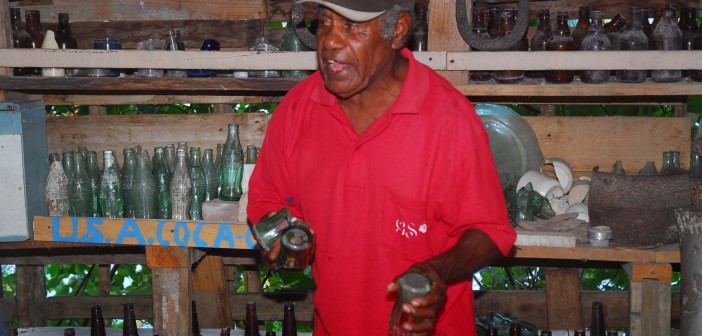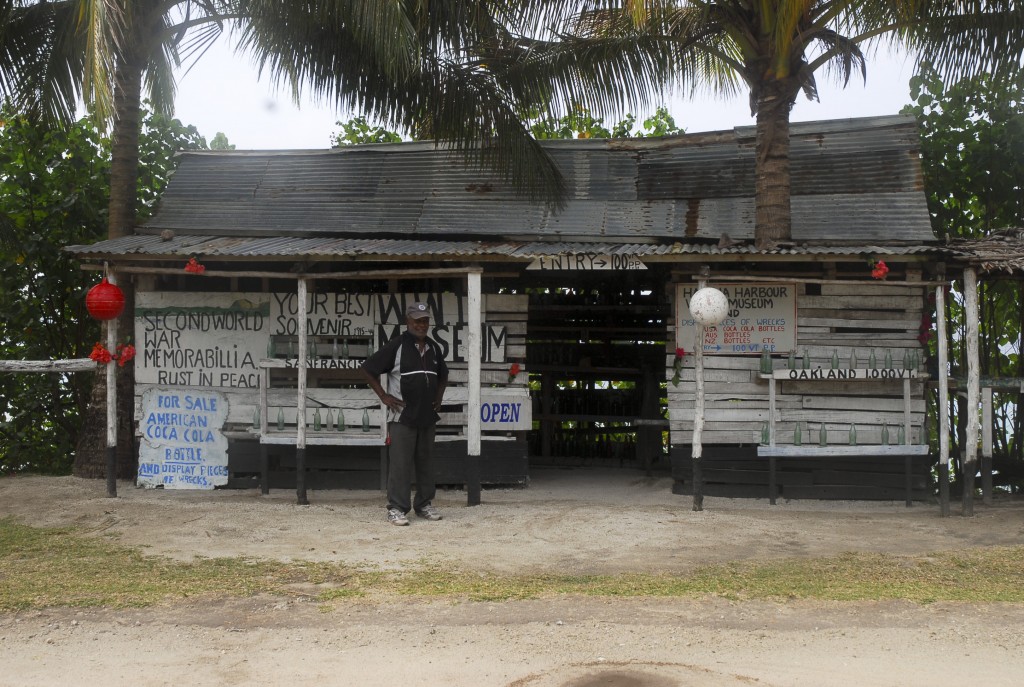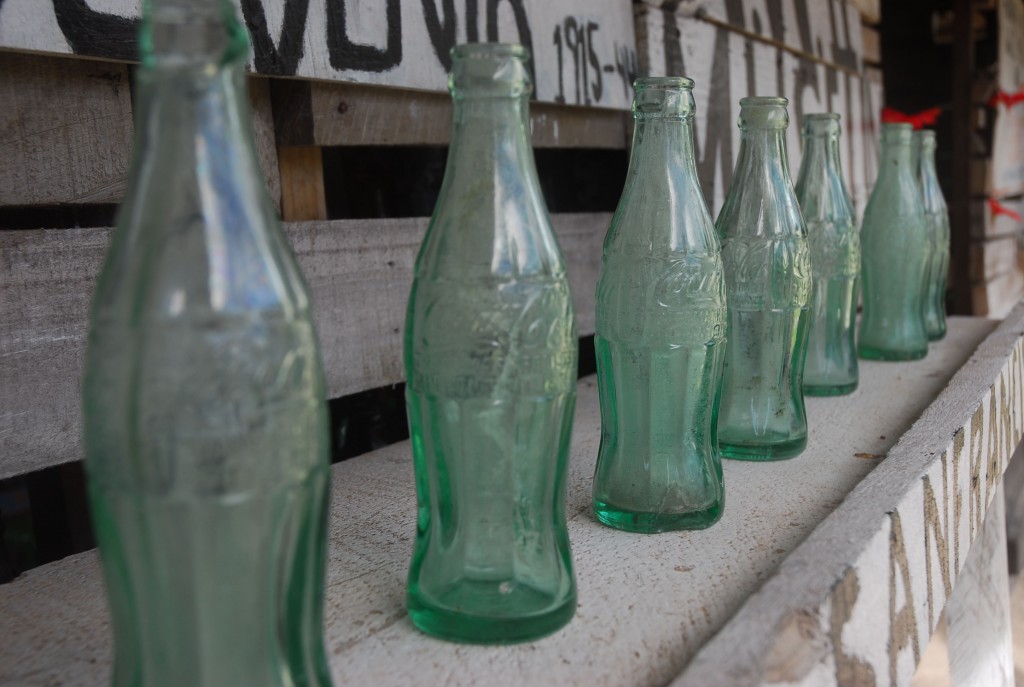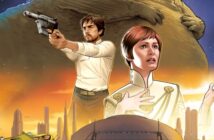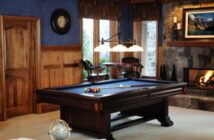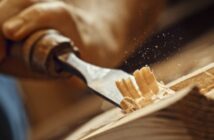There are very few people in this world who can say they make a living out of empty Coca-Cola bottles that are about 70 years old.
In fact there is probably only one – and that is Ernest Kalkoa, of the village of Tanoliu on the Pacific Island of Efate, 28 kilometres north of Port Vila, the capital of Vanuatu.
Most tourists who come to Vanuatu are based in Port Vila and one of the most popular excursions is the day drive around Efate.
Ernest, 75, is ‘the’ character of the round-island trip. Tourists from all over the world agree that no matter how their day has gone, they always leave his rough-hewn timber and corrugated-iron shed in a happier, more upbeat frame of mind than when they entered it.
The shed’s location helps – perched over the gently lapping waters of Havannah Harbour – but many visitors describe Ernest and his colourful spiel about Coke bottles, World War II and its Vanuatu connection as the highlight of their round-island experience.
Ernest, who has been collecting Coca-Cola bottles and WWII memorabilia for decades, cannot say how many of the legendary drink bottles he has, but they certainly run into the thousands.

A wiry man with a ready smile who appears much younger than his 75 years, he was born on the small nearby island of Nguna and still has vivid childhood memories of the American military and its huge presence in North Efate during WWII.
“I was only little when they came to my village in Nguna in a boat,” he says. “I ran down to see them at the water’s edge and I wasn’t afraid – I sort of knew who they were and why they were there.
“But my father and mother were hiding and watching me. After the soldiers left, my mother took a stick to me – that’s why I remember it so well.”
Ernest also remembers American soldiers giving him apples and dollar coins.
“One even gave me a Bible, which had the words inside ‘In God we stand’, and that impressed my father.”
In 1969 Ernest came to the village of Tanoliu with one of the Nguna chiefs. The pair married sisters and he has lived ever since in the picturesque location overlooking Havannah Harbour and the islands of Moso and Lelepa.
In the late 1950s, Ernest was working as a boat boy taking people to the hospital on Irririki island, in Port Vila harbour. He was befriended by a Dr Jamieson and his son, and when the good doctor and his family returned to England, they left Ernest with a stamp collection as a present.
“It was a good stamp collection, although sadly I don’t have it any more.”
But the collecting bug had well and truly bitten. He started fossicking around Tanoliu for anything and everything left by the thousands of US military personnel who were based in and around the deep waters of Havannah Harbour in the 1940s.
A rubbish dump near the village proved to be fertile ground, and the most common items that Ernest turned up at the beginning of the 1970s were WWII Coca-Cola bottles.
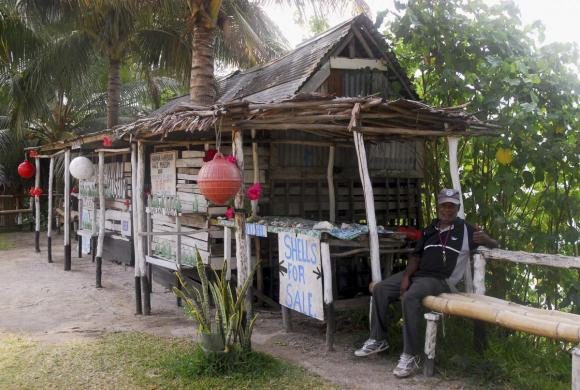
He admits to being fascinated, even somewhat obsessed, by unearthing bottles manufactured in dozens of American cities. The city of origin was moulded into the bottles.
“There are 346 cities or towns whose names appear on the bases of these bottles, and collectors from all over the world come to see me here in Vanuatu, buy some bottles and exchange information,” Ernest says.
He concedes that many the villagers were sceptical when he started collecting bottles and bits of US war memorabilia.
“I know what many of them thought, and I know they were laughing at me, but they don’t laugh any more.”
Ernest did not have much formal education but learned to speak good English while working in maritime positions for the British government in the old New Hebrides colonial days. He retired in 1993 and, since then, his museum is the major part of his life, apart from his wife, four children and nine grandchildren.
“It is my hobby – no, it is more than that – and I love to come down here every morning after breakfast and open up and wait for the tourists, who come every day.”
His eclectic collection, quaint museum signage and colourful talk sprinkled with bits of history have always proved a winner with tourists. However, Ernest says 2010 and 2011 are his best ever years.
A new round-island bitumen road has improved his business dramatically and he is now visited daily by seven organised tours in mini buses, plus a host of tourists in hire cars and other forms of transport.
“I love talking to the tourists every day. And I’ve read a lot about the history of World War II in the Pacific, so it’s fun to tell people about this as well as my collection.”
But the old fossicking spirit is never far from the surface. Ernest shows off a metal water bottle stamped ‘USA 1918’ that his grandson had recently found while out chopping wood for granddad.
“It’s great,” he says, then puts it back on a shelf amid items as diverse as a Canadian Club whiskey bottle, a grenade casing and the manifold from a 1939 Sikorski helicopter.
Having reached his mid-70s, Ernest does not seem to have any plans for retirement. He even talks about building a new shed to replace his ramshackle one.
It’s a safe bet that tourists will continue to be enchanted by this cheerful and interesting character who transformed the simple soft drink bottle into a unique attraction that also provides a good living for Ernest and his family.

